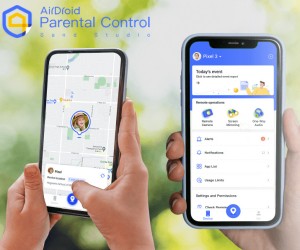When you have been experimenting with giant language fashions (LLMs) for search and retrieval duties, you’ve gotten probably come throughout retrieval augmented technology (RAG) as a way so as to add related contextual data to LLM generated responses. By connecting an LLM to non-public information, RAG can allow a greater response by feeding related information within the context window.
RAG has been proven to be extremely efficient for advanced question answering, knowledge-intensive duties, and enhancing the precision and relevance of responses for AI fashions, particularly in conditions the place standalone coaching information could fall brief.
Nonetheless, these advantages from RAG can solely be reaped if you’re repeatedly monitoring your LLM system at widespread failure factors — most notably with response and retrieval analysis metrics. On this piece we’ll undergo the very best workflows for troubleshooting poor retrieval and response metrics.
It’s value remembering that RAG works finest when required data is available. Whether or not related paperwork can be found focuses RAG system evaluations on two vital points:
- Retrieval Analysis: To evaluate the accuracy and relevance of the paperwork that have been retrieved
- Response Analysis: Measure the appropriateness of the response generated by the system when the context was supplied
Desk 1: Response Analysis Metrics
Desk 2: Retrieval Analysis Metrics
Let’s evaluation three potential eventualities to troubleshoot poor LLM efficiency based mostly on the stream diagram.
State of affairs 1: Good Response, Good Retrieval
On this situation the whole lot within the LLM software is performing as anticipated and now we have a great response with a great retrieval. We discover our response analysis is “appropriate” and our “Hit = True.” Hit is a binary metric, the place “True” means the related doc was retrieved and “False” would imply the related doc was not retrieved. Word that the mixture statistic for Hit is the Hit charge (% of queries which have related context).
For our response evaluations, correctness is an analysis metric that may be carried out merely with a mixture of the enter (question), output (response), and context as will be seen in Desk 1. A number of of those analysis standards don’t require consumer labeled ground-truth labels since LLMs will also be used to generate labels, scores, and explanations with instruments just like the OpenAI perform calling, beneath is an instance immediate template.
These LLM evals will be formatted as numeric, categorical (binary and multi-class) and multi-output (a number of scores or labels) — with categorical-binary being essentially the most generally used and numeric being the least generally used.
State of affairs 2: Dangerous Response, Dangerous Retrieval
On this situation we discover that the response is inaccurate and the related content material was not acquired. Based mostly on the question we see that the content material wasn’t acquired as a result of there isn’t a answer to the question. The LLM can’t predict future purchases it doesn’t matter what paperwork it’s equipped. Nonetheless, the LLM can generate a greater response than to hallucinate a solution. Right here it could be to experiment with the immediate that’s producing the response by merely including a line to the LLM immediate template of “if related content material is just not supplied and no conclusive answer is discovered, reply that the reply is unknown.” In some instances the proper reply is that the reply doesn’t exist.
State of affairs 3: Dangerous Response, Blended Retrieval Metrics
On this third situation, we see an incorrect response with blended retrieval metrics (the related doc was retrieved, however the LLM hallucinated a solution resulting from being given an excessive amount of data).
To judge an LLM RAG system, it is advisable each fetch the best context after which generate an acceptable reply. Usually, builders will embed a consumer question and use it to look a vector database for related chunks (see Determine 3). Retrieval efficiency hinges not solely on the returned chunks being semantically much like the question, however on whether or not these chunks present sufficient related data to generate the proper response to the question. Now, you will need to configure the parameters round your RAG system (sort of retrieval, chunk measurement, and Okay).
Equally with our final situation, we will attempt enhancing the immediate template or change out the LLM getting used to generate responses. Because the related content material is retrieved in the course of the doc retrieval course of however isn’t being surfaced by the LLM, this might be a fast answer. Beneath is an instance of an accurate response generated from operating a revised immediate template (after iterating on immediate variables, LLM parameters, and the immediate template itself).
When troubleshooting unhealthy responses with blended efficiency metrics, we have to first determine which retrieval metrics are underperforming. The best approach of doing that is to implement thresholds and displays. As soon as you’re alerted to a specific underperforming metric you may resolve with particular workflows. Let’s take nDCG for instance. nDCG is used to measure the effectiveness of your prime ranked paperwork and takes into consideration the place of related docs, so in the event you retrieve your related doc (Hit = ‘True’), you’ll want to contemplate implementing a reranking approach to get the related paperwork nearer to the highest ranked search outcomes.
For our present situation we retrieved a related doc (Hit = ‘True’), and that doc is within the first place, so let’s try to enhance the precision (% related paperwork) as much as ‘Okay’ retrieved paperwork. At present our Precision@4 is 25%, but when we used solely the primary two related paperwork then Precision@2 = 50% since half of the paperwork are related. This variation results in the proper response from the LLM since it’s given much less data, however extra related data proportionally.
Primarily what we have been seeing here’s a widespread drawback in RAG often called misplaced within the center, when your LLM is overwhelmed with an excessive amount of data that’s not at all times related after which is unable to provide the very best reply doable. From our diagram, we see that adjusting your chunk measurement is without doubt one of the first issues many groups do to enhance RAG purposes nevertheless it’s not at all times intuitive. With context overflow and misplaced within the center issues, extra paperwork isn’t at all times higher, and reranking gained’t essentially enhance efficiency. To judge which chunk measurement works finest, it is advisable outline an eval benchmark and do a sweep over chunk sizes and top-k values. Along with experimenting with chunking methods, testing out completely different textual content extraction strategies and embedding strategies may also enhance general RAG efficiency.
The response and retrieval analysis metrics and approaches in this piece supply a complete strategy to view an LLM RAG system’s efficiency, guiding builders and customers in understanding its strengths and limitations. By frequently evaluating these programs in opposition to these metrics, enhancements will be made to boost RAG’s potential to supply correct, related, and well timed data.
Extra superior strategies for bettering RAG embody re-ranking, metadata attachments, testing out completely different embedding fashions, testing out completely different indexing strategies, implementing HyDE, implementing key phrase search strategies, or implementing Cohere doc mode (much like HyDE). Word that whereas these extra superior strategies — like chunking, textual content extraction, embedding mannequin experimentation — could produce extra contextually coherent chunks, these strategies are extra resource-intensive. Utilizing RAG together with superior strategies could make efficiency enhancements to your LLM system and can proceed to take action so long as your retrieval and response metrics are correctly monitored and maintained.
Questions? Please attain out to me right here or on LinkedIn, X, or Slack!





